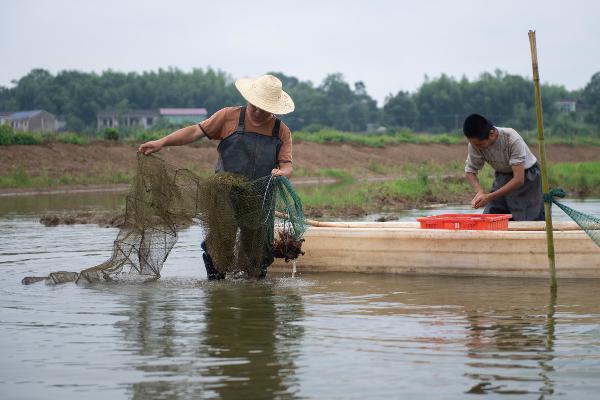GI branding boosts produce sales, raises living standards


Pioneers
Hunan already has several successful examples of GI products, such as Junshan crawfish from Junshan district, Yueyang city.
After being assigned GI status in March, the formerly little-known crawfish now has its own "ID card", which has helped win greater customer recognition and seen the price rise by 5 percent, said Zhou Yongjun, director of the Junshan Administration of Market Regulation.
"To achieve a GI label, Junshan's crawfish industry did a lot of work, including unifying standards of production and packaging, to improve the product's overall quality," he said.
"After gaining a GI label, the product's growing fame and higher quality make it more popular with consumers and help its price rise."
Zhou said that to make the most of the opportunities brought by GI labels, the local crawfish association, processors and breeders joined together to form a complete industry chain.
"While the farmers focus on breeding crawfish, the industry association is responsible for organizing experts to provide lectures for them on policies, technologies, production standards, along with brand building and coordination. Companies purchase crawfish from breeders via orders, process them and then sell them," he said.
A breeding base covering almost 4,800 hectares has been established in Junshan, and the 13 crawfish businesses in it have a daily trading volume of 580 metric tons.
The story is similar for Yanling yellow peaches, grown in Yanling county, Zhuzhou city, which were granted a national GI label in 2016.
Tan Zhongcheng, secretary-general of the Yanling Yellow Peach Industry Association, said the label means such fruit can only be labeled as a "Yanling yellow peach" if certain requirements are fulfilled-such as being grown at 300 meters to 1,000 meters above sea level in Yanling and meeting specific quality standards.
The association ensures that the peaches are grown, picked and packaged in line with a series of unified technologies and standards.
Compared with similar fruit grown by individual farmers without unified standards, Yanling yellow peaches are exposed to fewer chemical fertilizers.
They are also picked at a time that allows them to become fully ripe by the time they reach the stores so they taste sweet, and they are wrapped in better packaging, Tan said.
"That means they are well-received in the market, with 200 tons being exported to countries such as Singapore and Vietnam every year," he said.




